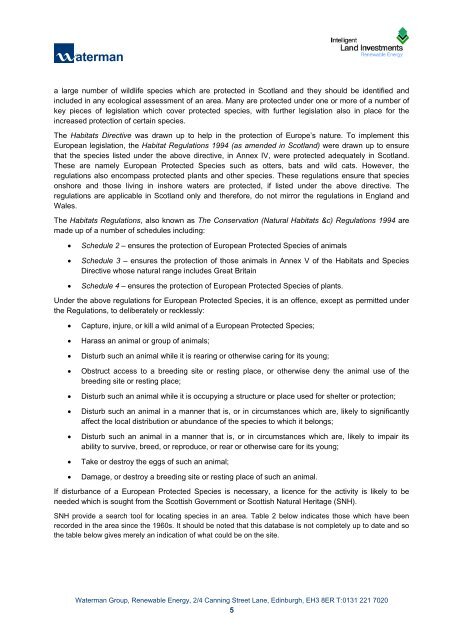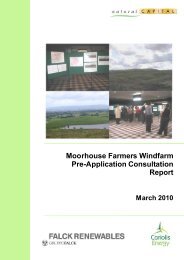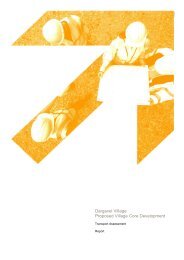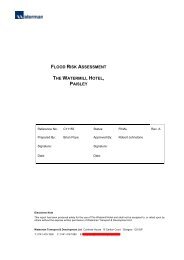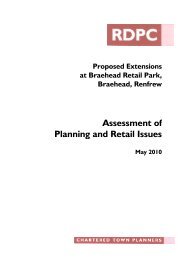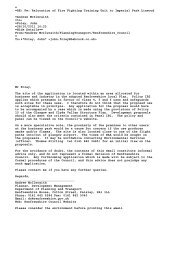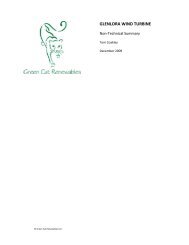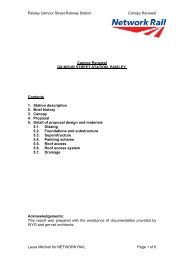Supporting Documentation - Renfrewshire Council
Supporting Documentation - Renfrewshire Council
Supporting Documentation - Renfrewshire Council
You also want an ePaper? Increase the reach of your titles
YUMPU automatically turns print PDFs into web optimized ePapers that Google loves.
a large number of wildlife species which are protected in Scotland and they should be identified and<br />
included in any ecological assessment of an area. Many are protected under one or more of a number of<br />
key pieces of legislation which cover protected species, with further legislation also in place for the<br />
increased protection of certain species.<br />
The Habitats Directive was drawn up to help in the protection of Europe’s nature. To implement this<br />
European legislation, the Habitat Regulations 1994 (as amended in Scotland) were drawn up to ensure<br />
that the species listed under the above directive, in Annex IV, were protected adequately in Scotland.<br />
These are namely European Protected Species such as otters, bats and wild cats. However, the<br />
regulations also encompass protected plants and other species. These regulations ensure that species<br />
onshore and those living in inshore waters are protected, if listed under the above directive. The<br />
regulations are applicable in Scotland only and therefore, do not mirror the regulations in England and<br />
Wales.<br />
The Habitats Regulations, also known as The Conservation (Natural Habitats &c) Regulations 1994 are<br />
made up of a number of schedules including:<br />
• Schedule 2 – ensures the protection of European Protected Species of animals<br />
• Schedule 3 – ensures the protection of those animals in Annex V of the Habitats and Species<br />
Directive whose natural range includes Great Britain<br />
• Schedule 4 – ensures the protection of European Protected Species of plants.<br />
Under the above regulations for European Protected Species, it is an offence, except as permitted under<br />
the Regulations, to deliberately or recklessly:<br />
• Capture, injure, or kill a wild animal of a European Protected Species;<br />
• Harass an animal or group of animals;<br />
• Disturb such an animal while it is rearing or otherwise caring for its young;<br />
• Obstruct access to a breeding site or resting place, or otherwise deny the animal use of the<br />
breeding site or resting place;<br />
• Disturb such an animal while it is occupying a structure or place used for shelter or protection;<br />
• Disturb such an animal in a manner that is, or in circumstances which are, likely to significantly<br />
affect the local distribution or abundance of the species to which it belongs;<br />
• Disturb such an animal in a manner that is, or in circumstances which are, likely to impair its<br />
ability to survive, breed, or reproduce, or rear or otherwise care for its young;<br />
• Take or destroy the eggs of such an animal;<br />
• Damage, or destroy a breeding site or resting place of such an animal.<br />
If disturbance of a European Protected Species is necessary, a licence for the activity is likely to be<br />
needed which is sought from the Scottish Government or Scottish Natural Heritage (SNH).<br />
SNH provide a search tool for locating species in an area. Table 2 below indicates those which have been<br />
recorded in the area since the 1960s. It should be noted that this database is not completely up to date and so<br />
the table below gives merely an indication of what could be on the site.<br />
Waterman Group, Renewable Energy, 2/4 Canning Street Lane, Edinburgh, EH3 8ER T:0131 221 7020<br />
5<br />
K:\Projects\CIV12920_ILI Windfarms_Batch 7\CIV12920_XXX_Hartfield<br />
Farm\Documents\Reports\CIV12920_1202xx_Hartfield_<strong>Supporting</strong> Turbine Assessment_225kW.docx


